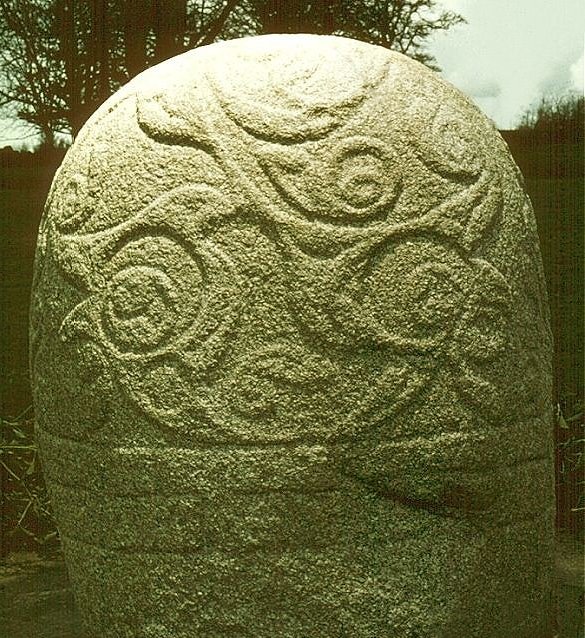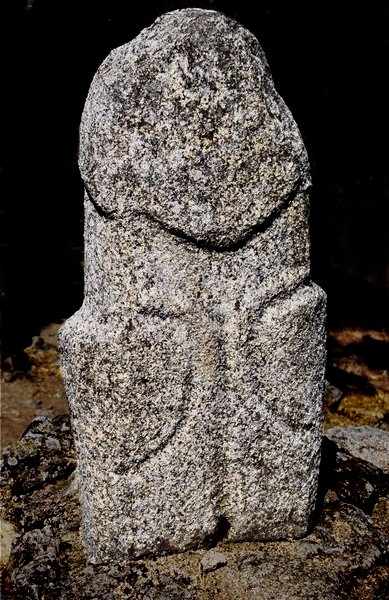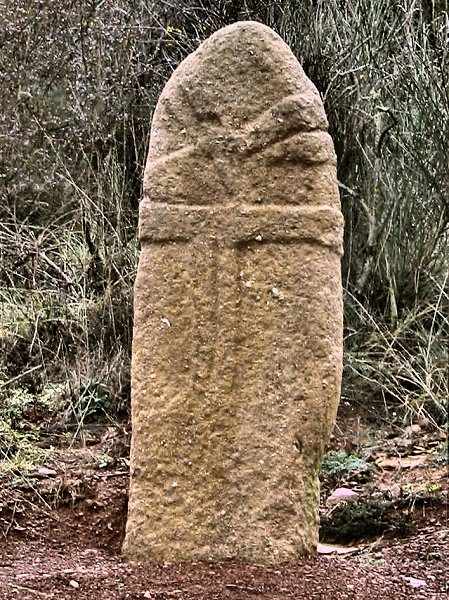|
Turoe, county Galway: phallic stone M 630 223 Nearest town: Loughrea This remarkable (and miraculously, remarkably-preserved) sculpture is no longer in its original position not far away inside the Rath (fortified farmstead) of Feerwore (Fír Mhór = Big [or Great] Men). Nor can it be seen as illustrated here, because a kind of crude garden shed has been constructed around it. Excavations suggested that an open site dating to the last centuries before the Christian Era was later enclosed. The stone is of granite, 90 cms high, and the top half is covered with a continuous abstract curvilinear design carved in relief in the Celtic style known as La Tène, with a line of Greek-key pattern beneath it suggesting the line where the foreskin meets the shaft of the penis. The flowing design can easily be interpreted as ornamental semen. It is amazing that such a wonderful object - resembling (and obviously as important as) the Navel Stone at Delphi, has survived in Ireland up to the 21st century, remaining outdoors until surrounded by the grotesque and cheapskate garden shed. It has a kind of "sister" in the egg-shaped Castlestrange Stone, county Roscommon.
|
Phallic stones are to be found all over the planet, erected at various
times up to the present..
Most of those in Europe were destroyed by Christians, for that curious, destructive
and antibiotic religion banned all sensibility
to the impressive - and, for that matter, the ridiculous - qualities of the
phallus.
A few escaped, not just in Ireland, but elsewhere, such as those on Corsica.
Those in Southern Portugal, and the Statue-Menhirs
of SW France,
often also have, in their more developed examples, female characteristics
such as breasts, and faces occupying the glans.
|
Filitosa (Corsica) |
<< BACK<<



